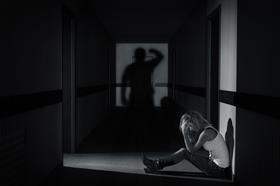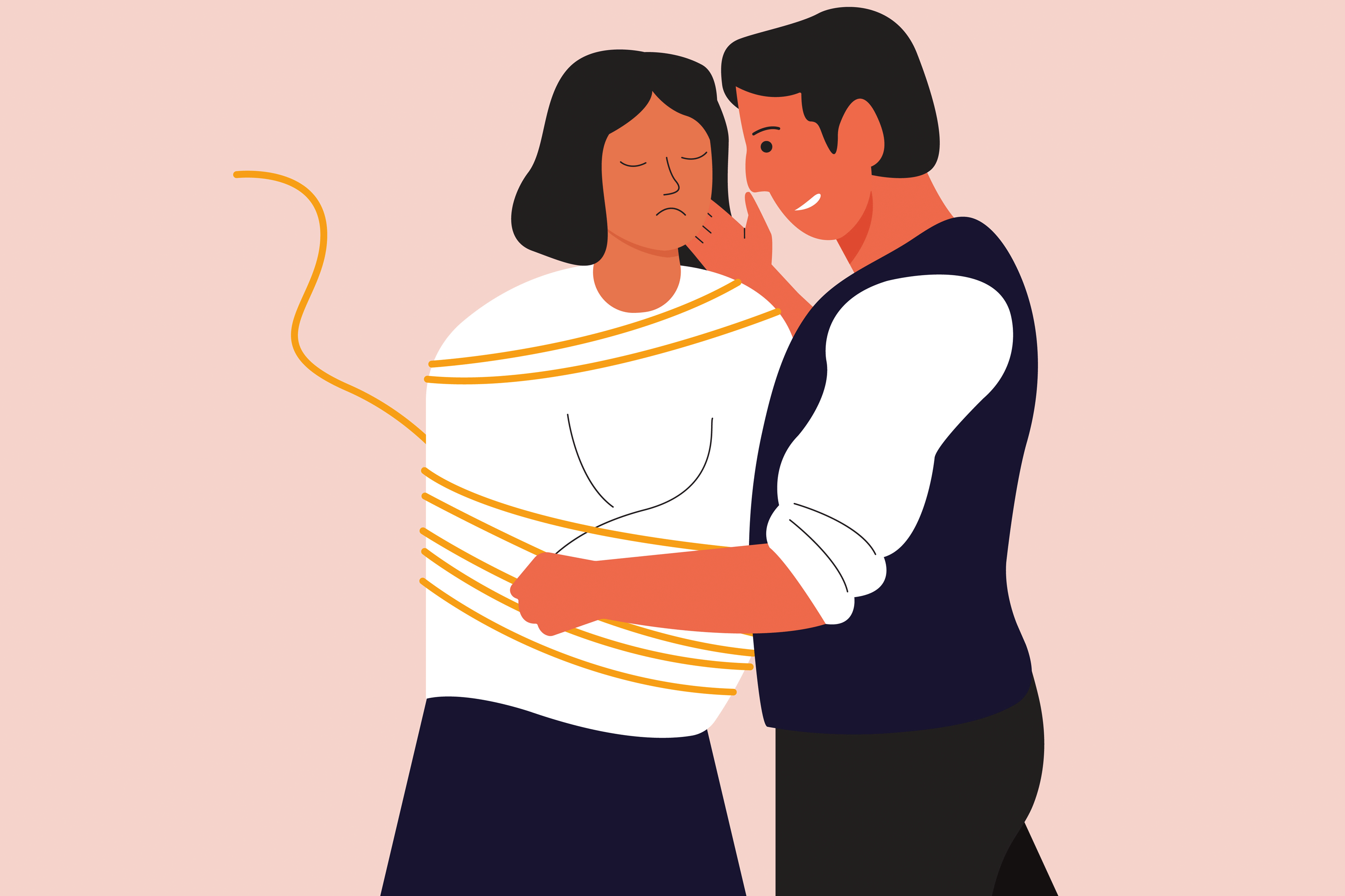Controlling and coercive behaviour was recognised as a discrete criminal offence in 2015, but is enough being done to protect victims?
The low down

The introduction of the criminal offence of controlling and coercive behaviour (CCB) in December 2015 represented a significant shift in the justice system’s approach to abusive relationships and how they evolve. But a lack of understanding of the offence by the police, coupled with practical difficulties in proving it, have limited its impact. In the family arena, meanwhile, a key Court of Appeal ruling has set out guidance on improving the way CCB issues are dealt with, urging a greater focus on the ‘pattern’ of events rather than single incidents. But the absence of compulsory training for judges on the topic is making it harder for victims to achieve just outcomes.
‘His face changes in a way you are starting to know and dread. In a way that tells you, you need to stay calm, silent and very careful… Those patterns continue: reward, punishment, promises of happy ever after, alternating with abject rage, menace, silent treatment and coercive control.’

These words of Rosie Duffield MP, from a speech to parliament in October 2019 describing her own harrowing experience of being in a controlling relationship, shone a light on a type of abuse that was explicitly recognised in a new criminal offence in December 2015. The offence of controlling or coercive behaviour (CCB), brought in through section 76 of the Serious Crime Act 2015, was designed to ‘close a gap in the law’ relating to CCB in relationships between partners, former partners or family members. The offence is not gender-specific, but is most often committed by men against women.
The 2015 offence originally applied to former partners only if they were still living together; but this cohabitation requirement was dropped this year, via an amendment to the Domestic Abuse Act 2021. That change is significant, as many victims are unable to report this type of abuse until they have extracted themselves from the relationship and no longer live with the person involved.
Previously, domestic violence tended to be seen in terms of single or repeated violent acts. But the problem with that is that it fails to capture the way controlling relationships evolve
Harriet Wistrich, Centre for Women’s Justice
For the CCB offence to be committed, the perpetrator must ‘repeatedly or continuously’ engage in controlling or coercive behaviour. What type of scenario does this encompass? The Crown Prosecution Service cites examples such as isolating the victim from friends and family; monitoring their time; controlling aspects of their everyday life, such as where they can go, who they can see and when they can sleep; repeatedly putting them down or telling them that they are worthless; controlling their finances; enforcing rules that humiliate them; or forcing them to engage in criminal activity – such as shoplifting, or abuse or neglect of children – so that they will blame themselves and feel unable to go to the authorities.
‘The criminal offence is a new definition that describes a problem that’s existed for a long time,’ remarks solicitor Harriet Wistrich, director of the Centre for Women’s Justice. ‘Previously, domestic violence tended to be seen in terms of single or repeated violent acts. But the problem with that is that it fails to capture the way controlling relationships evolve.
‘So now, instead of seeing it as a single criminal act, [the CCB offence] sees it as a way in which abusers seek to entrap victims in relationships. It includes things that aren’t necessarily criminal in themselves, such as a set of rules about how someone should dress or behave, which will usually contain some sort of threat of risk of physical violence. It’s a better way of understanding abusive relationships’.
Clare Wade QC, a criminal law barrister at Garden Court Chambers, says: ‘It’s the only offence where it’s possible for the actus reus of the offence to be made up of completely lawful behaviour; so it’s really unusual in that sense. It is one of the reasons why the offence is quite hard for people to get their head around.’
Practical effect
So how is the CCB offence working in practice? A government review published in May this year showed that the number of these offences being recorded by the police is increasing year-on-year, with 24,856 incidents recorded in 2019/20. But the vast majority of these do not get very far; in 2018/19, just 6% of recorded offences led to a charge.
On the rare occasions when the crime of CCB does get all the way to court, it attracts heavier sentences than those meted out for other domestic abuse offences, such as assault and stalking. But this is most likely an indication that only the most egregious instances of CCB are actually coming before judges.
‘The problem is that [the CCB offence] isn’t used enough or understood well enough by criminal law enforcement,’ remarks Wistrich. ‘[The police] don’t identify it as a pattern, but instead too often they see a physical act of violence and just focus on that – rather than taking a proper account, and understanding the background… From the cases we come across, working with frontline organisations that support women, what we see is that the police think it’s an easier option just to prosecute for a single offence.’
Mandip Ghai, senior legal officer at charity Rights of Women, observes: ‘Six years after the CCB offence was introduced, on our advice line, we still hear from survivors whose experiences have been dismissed or trivialised, and survivors who’ve found that the motivation to investigate or prosecute controlling or coercive behaviour simply hasn’t been there – especially if there hasn’t also been physical abuse.
‘The challenges go wider than this specific offence. Prosecution and conviction rates are low for all forms of violence against women and girls. Survivors lack confidence in the police and CPS. They fear that they won’t be believed, they will have to hand over sensitive medical records or mobile phone data, and that there will be long delays. They also fear their abuser’s reaction.’
Gathering the evidence needed to prove a CCB offence is no easy task for the police. Wade points out: ‘You need to be able to take an entire history [from the victim] and that takes trust. The person who’s disclosing the information has got to trust the person who’s doing the assessment or the interview. Many domestic violence victims are very wary – and are often still in the abusive relationship.’
For the CCB offence to be fulfilled, the behaviour must have a ‘serious effect’ on the victim. But its impact will vary from person to person. Wade notes: ‘The CCB offence takes what was originally a clinical concept and has translated it into law, into a legal harm. The concept of coercive control isn’t fixed. It may work differently on different personalities. So you might have a dynamic where somebody might be susceptible to being controlled, because of a particular characteristic, that an abuser may be able to pick up on and exploit.’
On the other hand, the requirement for the behaviour to have a ‘serious effect’ effectively punishes resilience, she adds: ‘The more resilient you are, the longer you would put up with something that was potentially causing you harm, or fail to recognise the harm that’s being caused. And the longer you put up with it, the more you’re going to get to a point where you break; you simply can’t get out of that situation.
‘That’s one of the reasons why [CCB] is so dangerous; because eventually everything just implodes. As [sociologist] Evan Stark points out, in a really bad case of controlling and coercive behaviour, there’s a very high possibility that it will end in death: either suicide, or some sort of homicide.’
But while the CCB offence is far from perfect, Wade believes it is a significant step in the right direction. ‘It does provide the potential for proper understanding of domestic abuse. And we haven’t had that before. We’ve had battered woman syndrome, or individual violence models – but this is a far more comprehensive way of understanding what’s going on,’ she says.

‘Unjust criminalisation’ of the abused
Controlling and coercive behaviour (CCB) is not just a crime in itself; it can also constitute the reason why another person was compelled to carry out criminal acts. But the law has not caught up with this yet.
This problem came to the fore in the high-profile case of Sally Challen, who killed her husband, Richard, with a hammer in 2010, after suffering years of bullying and abuse. She was convicted of murder in 2011, but this was ultimately downgraded to manslaughter on the grounds of diminished responsibility following new evidence of the psychiatric impact she suffered due to her husband’s controlling behaviour. She walked free due to time already served.
The Centre for Women’s Justice (CWJ) has proposed legal changes to reduce the ‘unjust criminalisation’ of women who have been abused. CWJ consultant Katy Swaine Williams says: ‘Although most women who experience domestic abuse do not become involved in offending, most women in prison or under community supervision are victims of domestic abuse. For many of these women, their experience of abuse is directly linked to their offending or alleged offending.
‘While it was a progressive step to introduce an offence of [CCB], there’s still a gap in protection for women who are coerced into offending. Qualitative research by the Prison Reform Trust, CWJ and others makes clear that this is a common occurrence, with women being coerced into handling stolen goods, committing mortgage or benefit fraud, bringing drugs into prison, hiding drugs and weapons – any offence you can think of.’
She adds: ‘Women in these circumstances can only rely on the defence of duress, which has a very high threshold and is ineffective in the context of domestic abuse.’
The CWJ proposes a new statutory defence for survivors whose offending is driven by domestic abuse, which could be adapted from the defence that already exists in section 45 of the Modern Slavery Act 2015 for victims of human trafficking or modern slavery who are coerced into offending.
The CWJ is also seeking a change to the law on self-defence, modelled on the provisions for householders in section 76 of the Criminal Justice and Immigration Act 2008. This would allow survivors acting in self-defence against their abuser the same protection that is currently available to householders who act in self-defence against an intruder in the home.
The CWJ sought to have these reforms introduced in amendments to this year’s Domestic Abuse Act 2021, but the changes were not supported by the government. ‘We’re now building more evidence, and conducting international research on other jurisdictions that offer better defences for victims of domestic abuse,’ says Wistrich. ‘At the moment, we see too many women being criminalised who are victims of abuse. We’re not giving up.’
Family matters
The effect of controlling relationships stretches beyond the realm of the criminal law, and often has an impact on proceedings in the family courts – such as decisions over whether or not a parent should have contact with their children.
‘Controlling and coercive behaviour is sadly very common,’ remarks Carolina Marín Pedreño, partner at Dawson Cornwell. ‘It comes up all the time in your first meeting with clients, when they’re describing their relationship’.
In March this year, the Court of Appeal handed down a key ruling on the issue, in Re H-N and others [2021] EWCA Civ 448. The court gave guidance on how judges should deal with allegations of CCB, encouraging them to move away from focusing on specific incidents to consider patterns of behaviour. It stressed the seriousness of controlling and coercive relationships and the harm that it caused children.
The appeal court also endorsed comments made by Mr Justice Hayden in F v M [2021] EWFC earlier this year. Hayden J highlighted the ‘insidious reach’ of controlling and coercive behaviour, and noted that there had been little reported case law on the topic from the family courts. He said his ‘strong impression’ was that this issue needed greater awareness, and ‘more focused training for the relevant professionals’.
Charlotte Proudman, barrister at Goldsmith Chambers who acted in Re H-N, agrees that more training is needed – particularly for judges. ‘CCB issues crop up in a lot of [family] cases,’ she says. ‘But I don’t think judges are properly trained in how to address these allegations; how to analyse them. There should be mandatory training on CCB for family judges.’
Proudman points out that aspects of CCB are difficult to prove, such as the victim having no access to their bank account or phone or that food was being controlled. ‘Judges will say, there’s no evidence,’ she says. ‘But there is evidence – there is the victim’s evidence. They are just discounting that, because they don’t seem to want to rely on a woman’s word – they want third-party evidence, which isn’t available.’
CCB issues crop up in a lot of family cases. But I don’t think judges are properly trained in how to address these allegations; how to analyse them
Charlotte Proudman, Goldsmith Chambers
Proudman was pleased to see the Court of Appeal’s guidance in Re H-N in relation to the need to look at patterns of behaviour.
‘The problem is that judges will compartmentalise the allegations,’ she says. ‘For example, controlling the victim’s money or making her stand on the scales to check her weight. Each thing is looked at in a vacuum – rather than looking at the fact that there are so many instances, taking place over a long time.
‘And the judge will say, “There’s evidence of physical abuse on 15 March 2020, but there’s no evidence of the next incident two weeks later.” But if someone is going to beat a woman up in front of her kids, the likelihood is that he has probably done that more than once.’
While Proudman sees Re H-N as beneficial, she believes it fails to deal with a vital point: ‘So you’ve proven CCB, and acknowledged that it’s harmful for a child – but what’s next? How should it affect whether the father should have contact with the child?
‘In cases where there have been findings of coercive control, abuse or even rape, the mother has still had to facilitate contact with the abusive father. You get the findings you want on CCB, but the father gets contact anyway. What, then, was the point in the mother being retraumatised [by having to prove CCB in court]? This is the biggest issue’.
Marín Pedreño points to other problems relating to CCB in family proceedings. The first is that victims need to be careful about raising allegations of abuse against the other parent, because they may find themselves accused of ‘parental alienation’ – that they are making up the abuse to turn the child against the other parent. This can lead to the abuse victim – usually the mother – losing custody of her children.
‘Parental alienation is being used very often, and in the wrong way,’ warns Marín Pedreño. ‘It’s a weapon that the abuser can use. It’s silencing a lot of victims, because their priority is not to lose their children. Their fear is that they won’t be believed in court, and they won’t have sufficient evidence’.

The solicitor would also like to see a change in the law that could reduce the need for time-consuming fact-finding hearings in private law cases, by making it easier for perpetrators to admit CCB without the risk of criminal prosecution. This immunity from self-incrimination already applies to admissions made during public law family proceedings over whether a child should be taken into care. But in private family law cases, such as those dealing with contact rights, this protection does not apply.
Marín Pedreño says: ‘When I have the perpetrator as a client, their first worry is, what are the police going to know about this? They are very concerned and very careful about making any admissions; and so things can escalate into the need to have a fact-finding hearing.
‘But perhaps if they knew that they had that protection [from prosecution], they would accept from the beginning, yes, I have behaved in that way, and I want to do this parenting course, this anger management course. Not everyone will admit that they are an abuser. But it could be a significant percentage who are pragmatic and say, clearly it’s going to be found out that I have been controlling my partner, and so what do I need to do to have contact with my child?’
‘We have such huge delays now in the family courts, it can take months or years for a case to be heard,’ she adds. ‘If you can reduce the amount of time spent on fact-finding hearings – which can last 10 to 15 days and so much valuable court time taken up – this could make a real difference.’

Rachel Rothwell is a freelance journalist





























3 Readers' comments